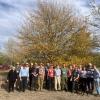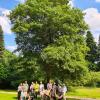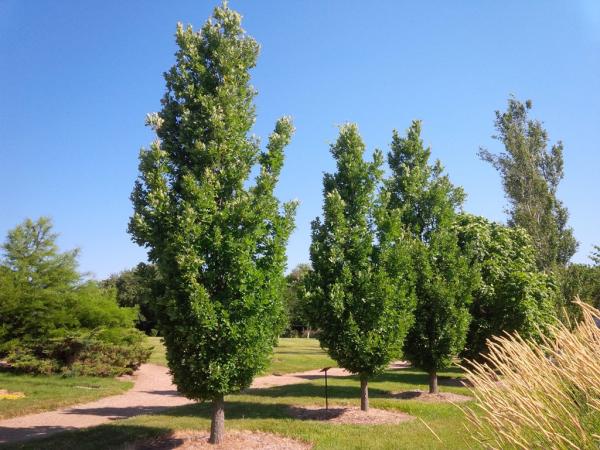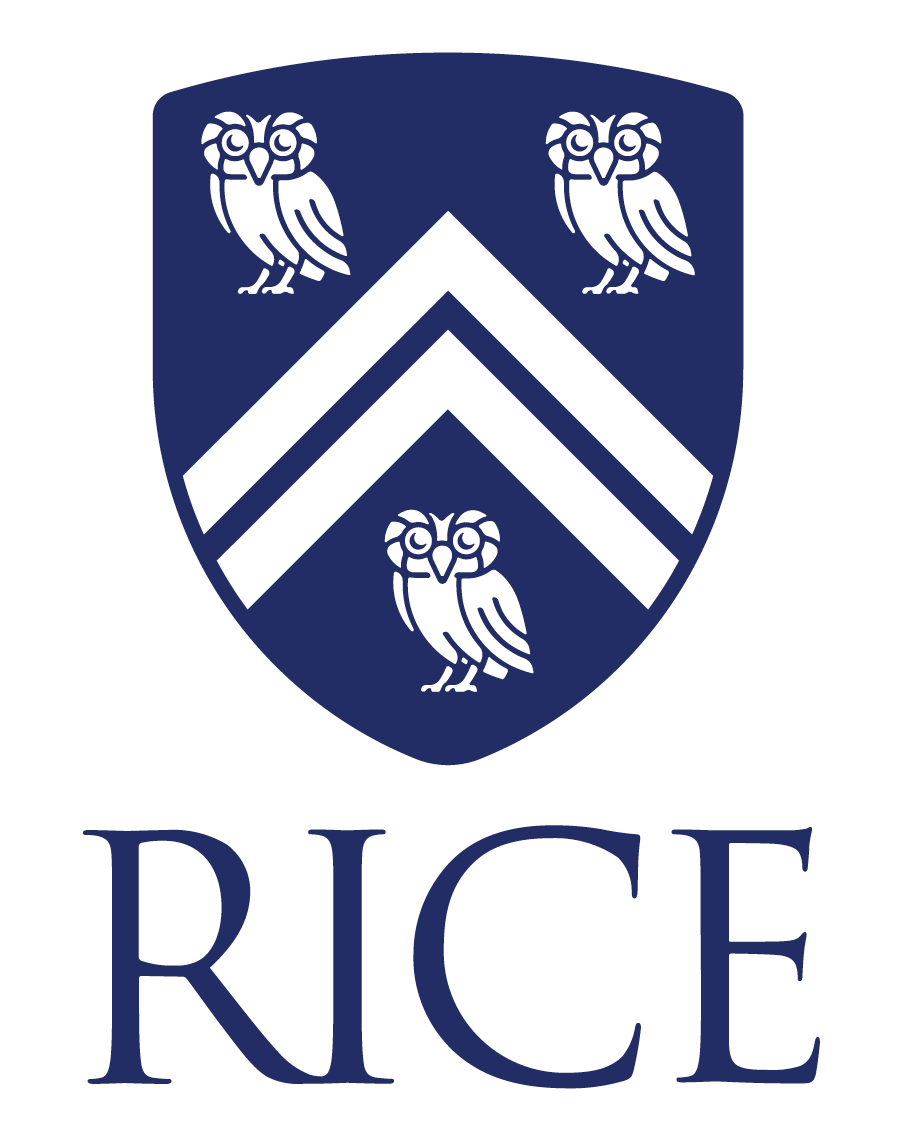Editor's Picks
Plant Focus

Oak Origins
From Acorns to Species and the Tree of Life
Andrew L. Hipp
The University of Chicago Press, 2024
ISBN 9780226823577
If you open this book at page 138 you will find there an illustration by Rachel Davis of the leaf of a tree that grew on what is now Axel Heiberg Island, in the Canadian High Arctic, some 45 million years ago. It’s of an unnamed species attributed to Quercus sect. Quercus, the White Oak Group. The nearest living tree to that island is currently to be found some 2,500 km to the south.
Fossils of alligators and turtles from the same time period were found close to the find site. It appears that at the time Axel Heiberg Island would have enjoyed a climate somewhat similar to modern day Louisiana, but with the winter darkness and summer midnight sun of the Arctic. If this was the land where the first trees that could reliably be called oaks originated, how can we account for their march southward, almost but not quite to the equator, and through modern Eurasia into East and Southeast Asia? How is it that the world’s current oak diversity hotspot is Mexico? How has the genus managed to be so successful, spawning multitudes of species that have become dominant in the forests, savannas, and woodlands of the Northern Hemisphere? These are questions that long-standing IOS member and Morton Arboretum Herbarium Director Andrew Hipp seeks to provide answers to. And he succeeds—emphatically.

The opening chapter covers flowering, pollination, and acorn production, and introduces us to interactions between oaks and other organisms through predation and symbiosis. Particularly, it stresses the role that scatter-hoarding by birds and rodents has played in the colonization of newly available habitats, as at the end of a glaciation episode.
This is followed by a discussion of the parts played by morphological plasticity and genetic variability in facilitating adaptation to changing environments. This leads naturally to the thorny topic of hybridity and its implications for the species concept. Given oaks’ reputation for promiscuity, how can it be that we can discriminate between different “good species” that are morphologically, genetically, and ecologically distinct when gene flow between them is so common? It would be foolhardy to attempt to summarize Andrew’s compelling explanation as to how, in his words, the branches of the oak tree of life are riddled with interconnections.
An exploration of the deep origins of the Fagales, the order that would give rise to the Fagaceae family, leads to the emergence of the genus Quercus, the two subgenera, the eight sections, and the 425-odd species of oak that we know today. It was at this point in the book that a hefty penny dropped for this reader with the realization that gene flow between species is not just a slightly eccentric quality of the genus: it’s been the key to oaks’ success as ecological problem solvers. Why it has taken so long for the penny to drop is perhaps made clear by Andrew’s quoting of plant geneticist Edgar Anderson, in 1949: “How important is introgressive hybridization? I do not know. One point seems fairly certain: its importance is paradoxical. The more imperceptible introgression becomes, the greater is its biological significance.”

Oaks as individuals are intriguing enough, but when they grow together in communities they present us with whole new dimensions of complexity. Why do oak species of different clades that would have split from each other millions of years ago tend to form communities together, and even come to resemble each other through convergent evolution? How do oaks of different species create different soil environments, and how does this affect the ecology of woodlands? What part in that ecology do the interactions between oaks and mycorrhizal fungi play, and how have they shaped the evolution of the multitudes of insects that depend on oaks? As Andrew states, these communities form an interconnected network of evolutionary laboratories.
An epilogue considers the likely future of oaks. We are reminded that 31 per cent of the world’s oak species are regarded as threatened with extinction, and our crazy experiment with the climate must be stacking the odds against them, but so far “they have survived by being in the right place at the right time, with the right set of tools.” And now they have friends that care about them.
I think this will prove to be one of the most important books written about the genus Quercus to date. It’s a work to be read and re-read, frequently. In her lyrical foreword to the book, Béatrice Chassé writes that “…like me, I am sure you will turn the last page with some of your questions answered, some of your answers questioned, and some new ideas perhaps already become questions.” Indeed. I can’t imagine an IOS member who wouldn’t be delighted, intrigued, and inspired by Andrew’s magisterial gift to us.















